Orange Technical Director Ade Emsley chats with his mate and inspiration for the Bass Butler, Morgan Nicholls, who is best known for performing with Muse, Gorillaz, The Streets and Lily Allen.
Celebrating the 20th anniversary of our AD30, Technical Director Ade Emsley runs us through the idea behind it, and gives it a run for its money with our new Orange Custom Guitar.
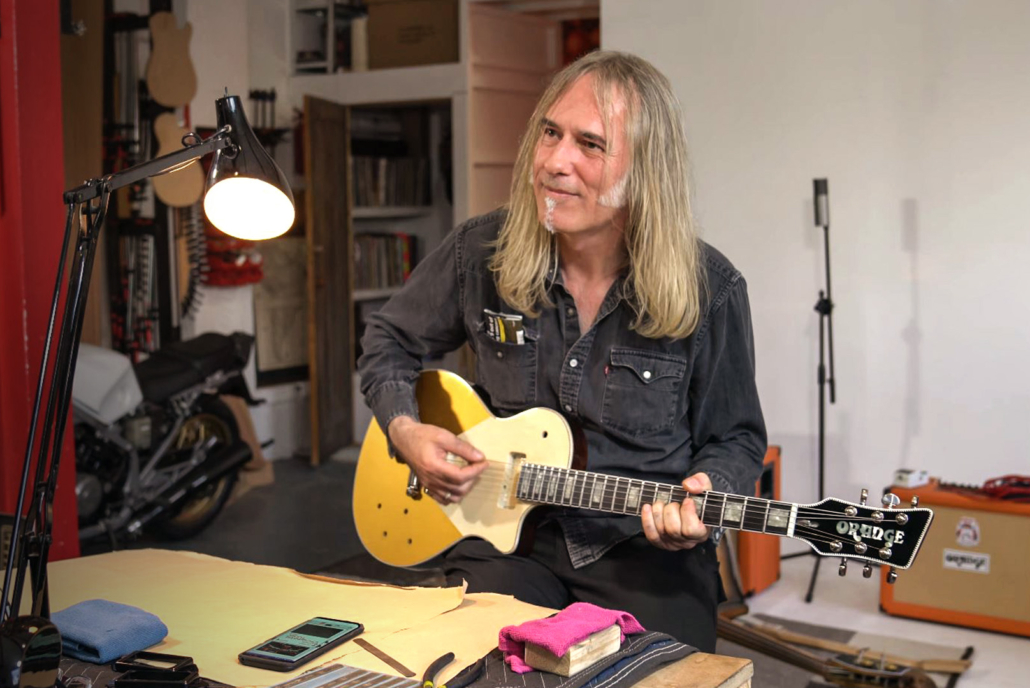
Orange Amplification is proud to announce its new hand built, Custom Guitar. Designed by Orange’s Technical Director Ade Emsley and constructed by luthier Jason Burns at Blast Cult, each guitar is made to order in London, England. Fashioned from solid mahogany, the OE-1 is available in a two-toned gold and ivory or custom finish. The custom 12” radius ebony fretboard has 22 frets. The inlaid headstock and body has an eye-catching chessboard nitro binding.
The guitar features a nickel, ABM, Kalamazoo, Tune-O-Matic Bridge and Stop Bar Tailpiece for easy adjustment and tuning stability. The OE-1 is fitted with Grover® tuners, four custom turned brass control knobs and a robust three-way switchcraft toggle switch including a custom clear pickguard. Purchasers of the OE-1 will be offered a choice of alnico Staple soapbar P90’s or custom Mojo dogear UK Filtertrons. The guitar will be supplied in a Hiscox hard case.
Ade Emsley commenting on the design of the guitar said “It’s a blend of engineering, instinct, and my own experience with high-end guitars. I’m very proud of the sound and the feel that the guitar delivers.”
Available through the Orange Global Store.
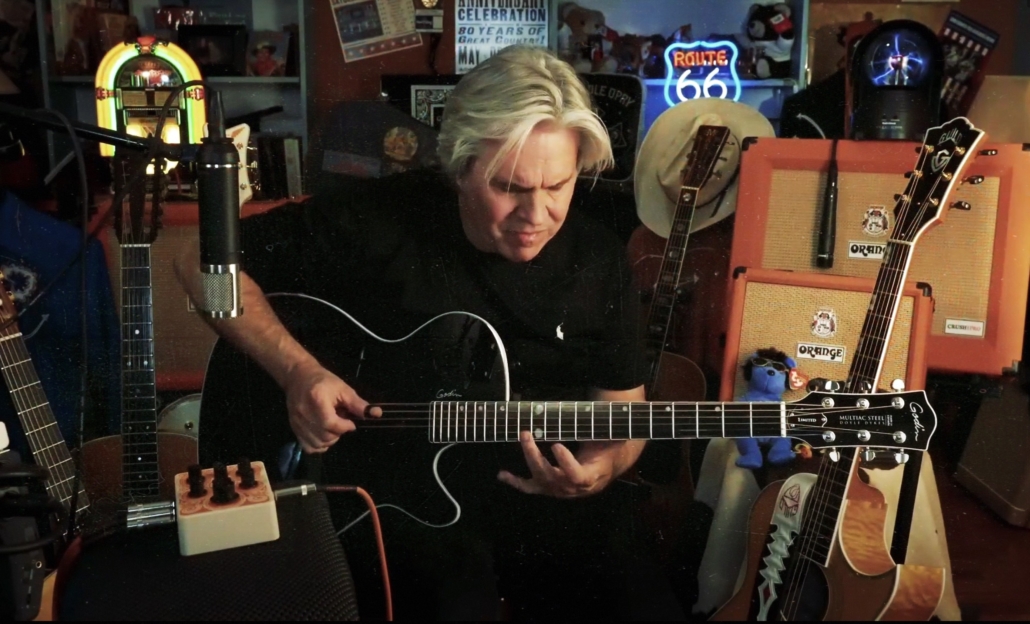
The Orange Acoustic Pedal takes all the know-how of our acclaimed Acoustic Pre TC preamp and Crush Acoustic 30 amplifier, cramming it all into a do-it-all, compact preamp pedal. Whether you need to win the battle against feedback, handle complex effects chains, brighten up a dull instrument or just plug into a PA, the Acoustic Pedal has you covered – in top-notch Orange style.
With a low-noise JFET circuit design, surgical-yet-flattering EQ, XLR and 1/4″ outputs and a buffered FX Loop, all situations are taken care of. This high-headroom, high-quality pedal keeps your setup simple and controlled, leaving you free to do what you do best. Play.
Here we’ve got American country guitarist and Orange ambassador Doyle Dykes both reviewing, and demoing the pedal: «It has the best mid-section I’ve ever seen on any pedal.»
Review above, demos below. Enjoy!
For years, our Terror Series amps have proven that the biggest sounds can come in the tiniest packages… Find our Terror Stamp here.
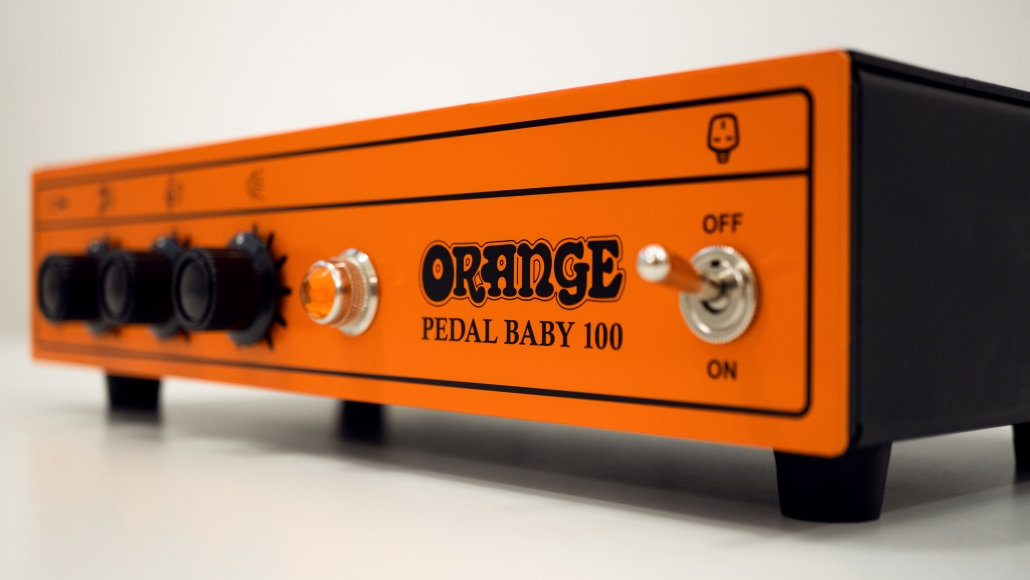
The Pedal Baby 100 is definitely the odd one out in the Orange product range, and the Technical Enquiries inbox still gets a fair few questions from would-be pedal nerds. What is the Pedal Baby? How do I use it? Will it work with this? Or that? It’s a simple principle – just a flat power amp that sounds and feels “right”, making whatever you plug in as loud as you need it – but, in the confusing world of guitar marketing, it’s an idea quite unfamiliar to a lot of players. I worked closely with Orange Technical Director, Ade Emsley, on the Pedal Baby 100, so the easiest way to explain it is probably to tell you how it came about…
THE PROBLEM:
Like many guitarists in the present day, I get my entire sound from my pedalboard. As a gigging sideman, session player and producer/guitarist, I need to plug into all kinds of different things without compromising my tone. Whenever I can, I like to play through my own loud amp but, in the real world, I need to use the house backline, plug straight into the PA or run direct in the studio. It’d be foolish to rely on a big amp for my tone if I don’t always get to use it, right? So it all comes from the pedalboard* (mine happens to be a load of separate stompboxes but it’s the same reason people use modellers).
The problem with my setup (or a modeller) comes when trying to amplify it. What do you use? Plugging straight into a big amp when you can is great fun, but you’ll miss it when you can’t use it. You could always just go straight into the FX return for a “flat” response, but then you’re wasting half an amp! What about house backline? Their cab is probably fine but the amp could do all sorts to your tone, requiring hurried tweaking in soundcheck (if you’re lucky enough to get one). And, lastly, many of the power amps and FRFR options available today simply don’t have the feel and engagement that made you love big, loud amps in the first place.
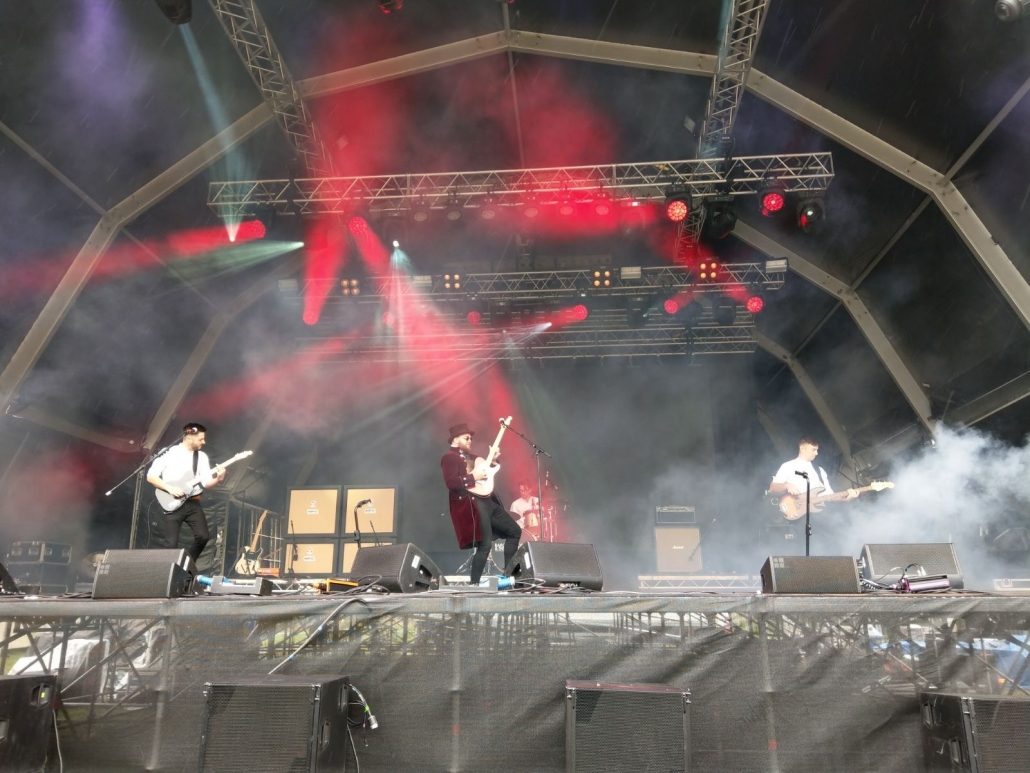
The lightbulb moment happened while I was playing with the excellent Baron Goodlove & The Dreadful Noise (check him out, he’s very good). I’d been lucky enough to spend a lot of time with the amp genius that is Ade Emsley in the Orange R&D workshop and had taken a lot of his gear out on gigs – including clubs, festival main stages and studios. At the end of my “everything on the pedalboard” signal chain were a pair of Orange Crush Pro 60 1×12 Combos (yes, I like stereo). Plugging the outputs of my board into the FX Returns of these solid state amps quickly dispelled any valve amp snobbery I might have had. They were loud enough and the Class A/B output stage was dynamic and responsive. This covered the gigs where I could take my own rig, but what about house backline?
Also on my board was Ade’s prototype for what became the Kongpressor pedal. This version has a full EQ and sat at the end of my chain (the producer in me likes compression last). The interesting thing was how the cut/boost Bass and Treble controls were voiced. More like Depth and Presence, they sat right in the areas of the frequency range that you find the “chug” of a 4×12 and the “cut” of a bright speaker. With just these two knobs, I could pretty much dial in or out those two defining characteristics of any backline cab and make it sound like my own – if the house amp had an FX Return. If only I could have brought my Crush 60’s power amp on the London Underground too…
THE SOLUTION:
When I came to Ade Emsley with this set of problems, the solution he came up with was better than I could have imagined. The prototype that resulted became the Pedal Baby 100 and it ticked all the boxes. Starting with the output section from the Crush Pro 120, Ade beefed up various aspects of the circuit, making it even more suited to a hard life on the road – and running a bit cooler in the process. This 100W class A/B design would be just as engaging as a loud, clean valve amp, but was shoehorned into a chassis small enough to fit in a guitar case, overhead locker or band van Tetris game.
What’s more, using this Class A/B bridged design came with another advantage. Not only does it provide that inimitable “feel” that can be missing in today’s Class D power amps, it’s also more suitable for use with guitar cabs. A Class D Amp rated at 100 Watts will produce 100W into a 4 Ohm load. Into 8 Ohms, that will drop to 50W. When you’re hooked up to a 16 Ohm cab, that’s dropped right down to 25 Watts! Considering most guitar cabs are 16 or sometimes 8 Ohms, this is suddenly a less usable prospect than it seemed on paper. Imagine turning up to a festival with what you think is a 100W amp, only to find their industry-standard cabs have robbed you of 75 of those Watts! The Pedal Baby’s 100 Watt power amp produces full power into an 8 Ohm load, only dropping to 70 Watts when a 16 Ohm cab is used. Don’t believe the myth – solid state Watts are just as loud as valve ones, and 70 is plenty!
The really clever bit, however, is the input section of the Pedal Baby. At the time all this was going on, Ade was working on the prototypes for the Orange Getaway Driver pedal. These single-ended JFET designs were capable of some really amp-like drive sounds. I wanted a piece of this action – but clean! Although solid state, this type of circuit contributes a very valve-y quality to the sound, with a certain detail and warmth that’s lacking in other types of solid state designs. In fact, valve preamps are single-ended too – it’s a large part of what gives them their sought-after character. The bass and treble controls from my Kongpressor prototype were redesigned as a single-ended circuit and added to this input stage, giving the same flexibility I’d relied on for getting through house backline gigs. Dial your pedalboard in with these controls set flat (12 o’clock) and your cab connected – go to the gig – adjust until the house cab sounds like yours.
So, the Pedal Baby 100 is a tiny 100W power amp that still “feels” like a real amp. It has more than enough power for any size of stage, and will work brilliantly with whatever cabs you find there. And, if you have to leave your own cab at home, the Bass and Treble controls ensure that you never have to mess with your carefully-crafted pedalboard settings. For self-contained pedalboards, or modeller-based setups, it’s a great way to enjoy all the practicality that made you choose that type of rig – and take that with you wherever you want – without missing out on the fun and connected feeling of using a proper, loud amp.
For all of you nerds that like to look at pictures of gear (I am one such nerd), here’s some real life evidence of the original Pedal Baby prototypes on their maiden voyage. See if you can spot them in the backstage pic with Baron Goodlove & The Dreadful Noise on the main stage of the UK’s Standon Calling Festival.
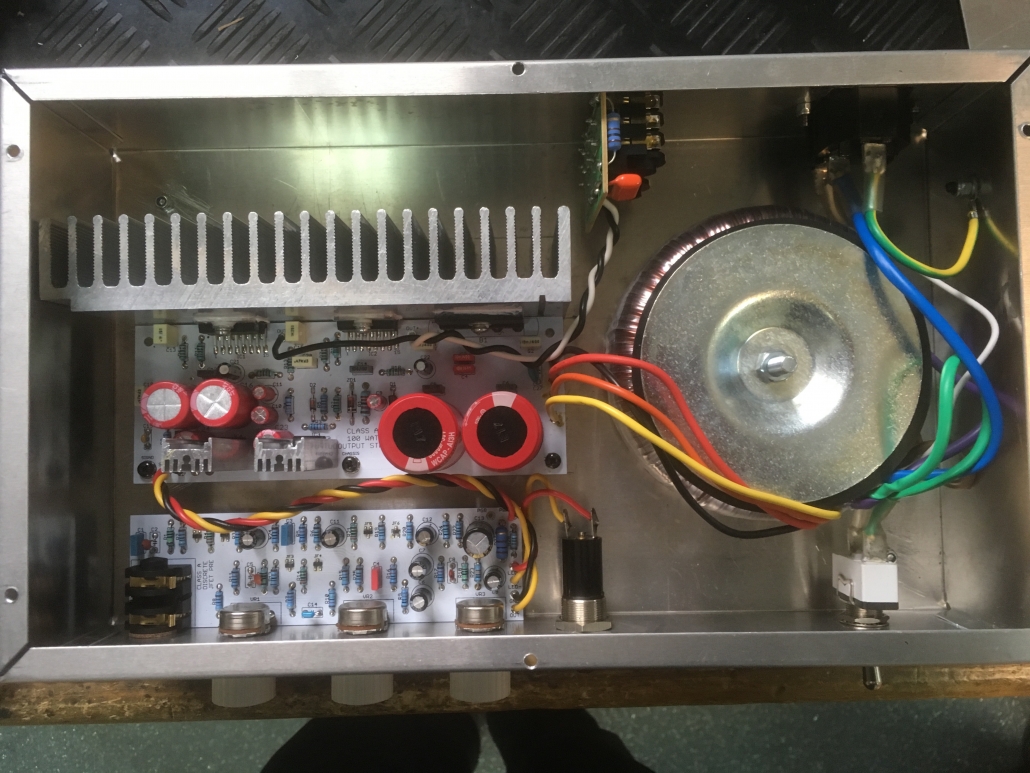
Ty Tabor of Kings X runs you through our Crush range.
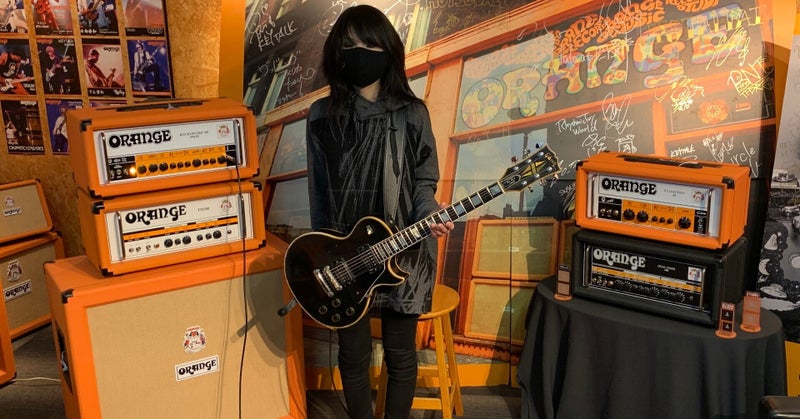
This article was originally posted here in Japanese, and has been translated and summarized by our Asian Business Development Manager Toshi. (Thank you, Toshi!)
To raise funds for the venue Fever Shindaita in Tokyo which was struggling during the pandemix, Boris created and sold “Boris x Orange t-shirts” and used the funds to provide backline for Fever. They started a movement among artists to make an extended effort to save live music venues of going out of business
Below are some reviews of Orange amps by Wata and Takeshi when they visited the Kurosawa showroom to choose the donation items:
Wata & Our Rockerverb 100H MKIII:
“The clean channel produces classic crunchy sound and vintage warm tone while the dirty channel can deliver killer distortion sound when the gain is up. Reverb control helps also widen sound variety. “Very versatile for both recording and live, and attenuator comes in handy to maintain the tone” – Takeshi.
Wata & OUR TH100H:
“In terms of high gain the dirty channel can bring more deadly distortion than Rockerverb 100H MKIII. I find the shape control very interesting because it can alter the sound in very unique ways, you can find that evil distortion sound, you just have to find it yourself” “Everyone should try this beast when you get a chance” – Takeshi.
WATA & OUR Custom Shop 50:
“Nostalgic looks and cute, simple and very intuitive. It delivers all the tone characters and would hardly distort when gain is turned up. Genuine Orange look and sound. It is so cute and I want it. I love the tone changes from crunchy to overdrive as the volume goes up. There used to be bass boost knob. But this is the legacy of the authentic British amp sound.” – Takeshi.
Jim Root of Slipknot demos the Rockerverb 100 MK3 guitar amp live at Download Festival. Find our Rockerverb series here.
